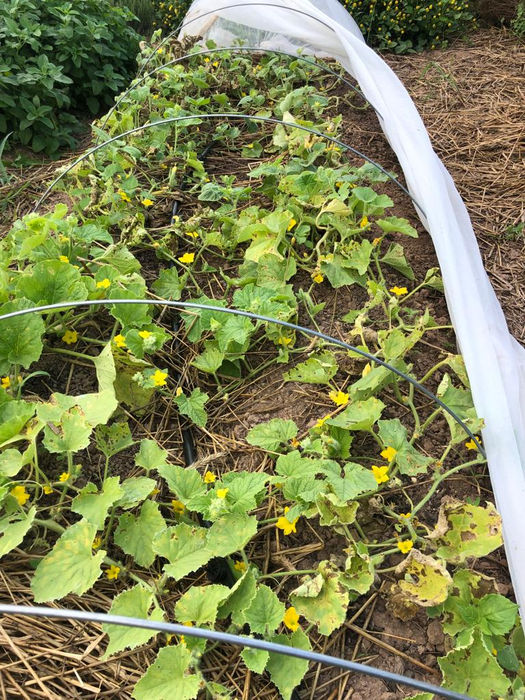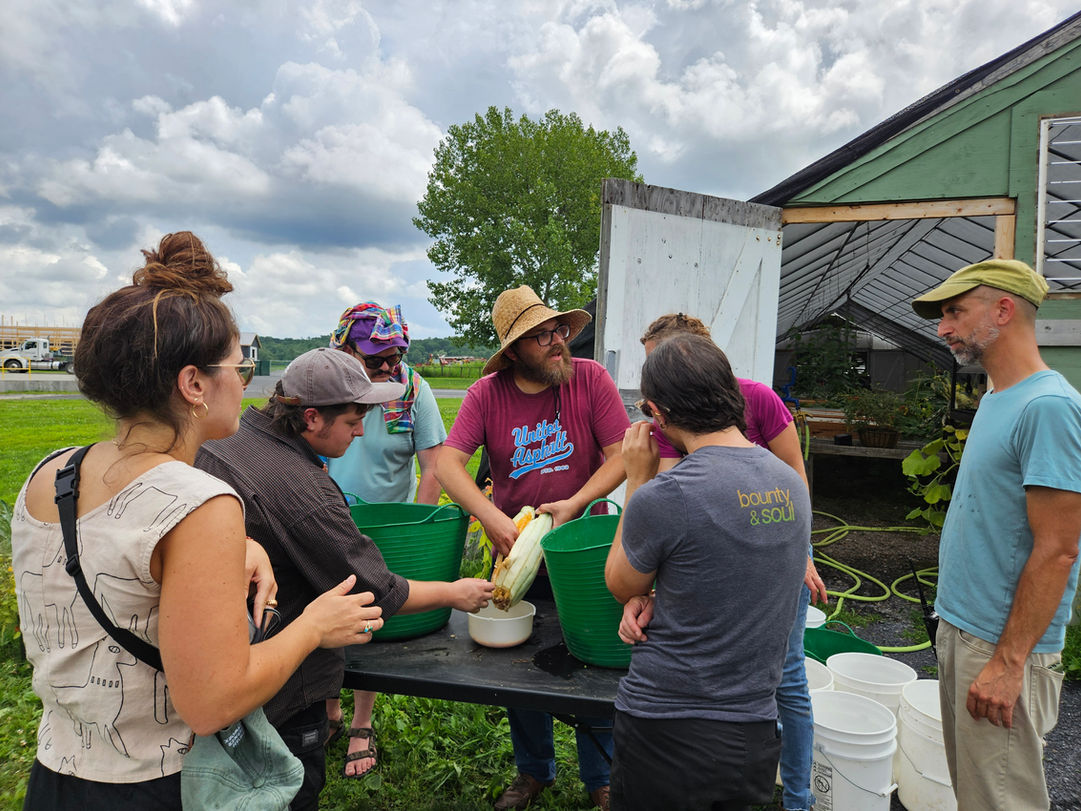Jewish Seed Project
The Jewish Seed Project is a collaborative of Jewish growers, seed keepers, researchers, and storytellers seeking and building relationships with culturally relevant seeds. As we navigate interwoven histories of Jewish diaspora, exile, assimilation, and landlessness, we ask:
“What is a Jewish Seed?”
This project was instigated by sephardi Jewish seed activist and founder of the Hudson Valley Seed Company, K Greene. After years of supporting other peoples in their cultural seed work, K turned some of their attention towards the question of Jewish seeds.
The Jewish Seed Project began our inquiry with a Cucumis melo variety described frequently in both the Torah (the Hebrew Bible) and the Talmud (major source of Jewish law). This chate melon is known in ancient Hebrew as "qishut" (singular) or "qishuim" (plural).
While the descendants of the qishuim mentioned in the Torah have been continuously and lovingly stewarded by Egyptian, Palestinian, and Italian farmers, they have largely not been associated with Jewish communities since the time of the Talmud (~500 CE). Just as farmers from different branches of the Jewish diaspora are reconnecting, so too are these seeds reaching through history to reconnect with their far flung relatives from across the world.
JSP research growers cultivate "diaspora gardens" in which descendants of the qishuim from diverse Jewish diasporas are grown together and encouraged to cross pollinate. These gardens deepen our relationships with these seeds and hold the potential to yield something new-- perhaps a new diasporic cultivar or maybe just a diverse diasporic population.
We are grateful to the Seed Growing Program at the Hudson Valley Farm Hub, to Nate Kleinman of Experimental Farm Network, to all the growers who have stewarded these seeds, and to the seeds themselves. We hope to continue our journey with qishuim and to expand our project to other culturally relevant seeds in the future.

.png)

Where do our lives as Jewish farmers and gardeners intersect with the stories of seeds, both ancient and modern?
How can we find, grow, and share culturally resonant seed across our community?
Join us for an adventure in seed keeping, seed sharing models, and contribute to the creation of JFN's seed project!
We recognize that — just as we keep seeds — they, too, keep us. Seeds grow with us, care for us, and sustain us with nourishment, stories, memories, and beauty. We approach the seeds with intention and the desire to share in their sustained life.
In keeping seeds, we honor their history, passed down from generation to generation, connecting us to those who have kept seeds before us. In thinking of ourselves as future ancestors, we consider what these seeds will share in the future by observing and learning from what they share with us today.
We are growing for future generations while enjoying the fruits of the present and seeking to understand the past.


Learn more about the Qishu'im
"The three cucurbits mentioned in the Hebrew Bible, the qishu’im, the avattihim, and the paqqu’ot sade, as well as several other cucurbits, are the subject of rabbinical commentary in the Mishna and the Tosefta. The citations from the Mishna and Tosefta below will be given according to the name of the massekhet (tractate), chapter number and statement number. Most significant is that the first four cucurbits described below were mentioned along with edible fruits of various other plant families on the subject
of tithing (Mishna, Ma’asrot 1:4) and therefore must have been food sources growing in Israel in the 2nd century.
The qishu’im were known to the Children of Israel from Egypt, who longed for them during their wanderings in the Sinai Desert (Numbers 11:5). No later than by the time of the first temple in Jerusalem, their cultivation in Judea
1446 Janick et al. — The Cucurbits of Mediterranean Antiquity must have been common, as there was a special word in Hebrew for a field of them, miqsha (Isaiah 1:8). Moreover, these qishu’im or qishu’in, or in the singular form, qishut, are the most frequently mentioned cucurbit in the Jewish commentary, reflecting their relative importance and widespread culture in the Israel of Roman times
Vesling (1640), in his supplement to Alpini’s De plantis Aegypti liber, presented an illustration, labelled Chate, which was clearly based on a plant of Cucumis melo having rather elongate, nearly rhomboidal fruits. The epithet ‘chate’, a blundered rendition of qatta (Loret, 1892), is used at present to designate a cultivar-group of C. melo that is distinguished by fruits having a length-to-broadest-width ratio of around 2 : 1 or 3 : 1 and that are not sweet, but are used when young, like cucumbers, raw, pickled or cooked (Pitrat et al., 2000). Feliks (1967, 1968) and Zohary (1982) concurred that the qishu’im of Biblical times were chate melons."
Want to nerd out?
Read these academic articles:
"The Cucurbits of Mediterranean Antiquity: Identification of Taxa from Ancient Images and Descriptions"
BY JULES JANICK, HARRY S. PARIS and DAVID C. PARRISH
Published in Annals of Botany Vol. 100, No. 7 (December 2007), pp. 1441-1457 (17 pages)
Published By: Oxford University Press
"Reflections on linguistics as an aid to taxonomical identification of ancient Mediterranean cucurbits: the Piqqus of the Faqqous"
BY JULES JANICK and HARRY S. PARISH
BY NOAH WEINBERG

Want to nerd out?
Read these academic articles:
"The Cucurbits of Mediterranean Antiquity: Identification of Taxa from Ancient Images and Descriptions"
BY JULES JANICK, HARRY S. PARIS and DAVID C. PARRISH
Published in Annals of Botany Vol. 100, No. 7 (December 2007), pp. 1441-1457 (17 pages)
Published By: Oxford University Press
"Reflections on linguistics as an aid to taxonomical identification of ancient Mediterranean cucurbits: the Piqqus of the Faqqous"
BY JULES JANICK and HARRY S. PARISH

.png)



















